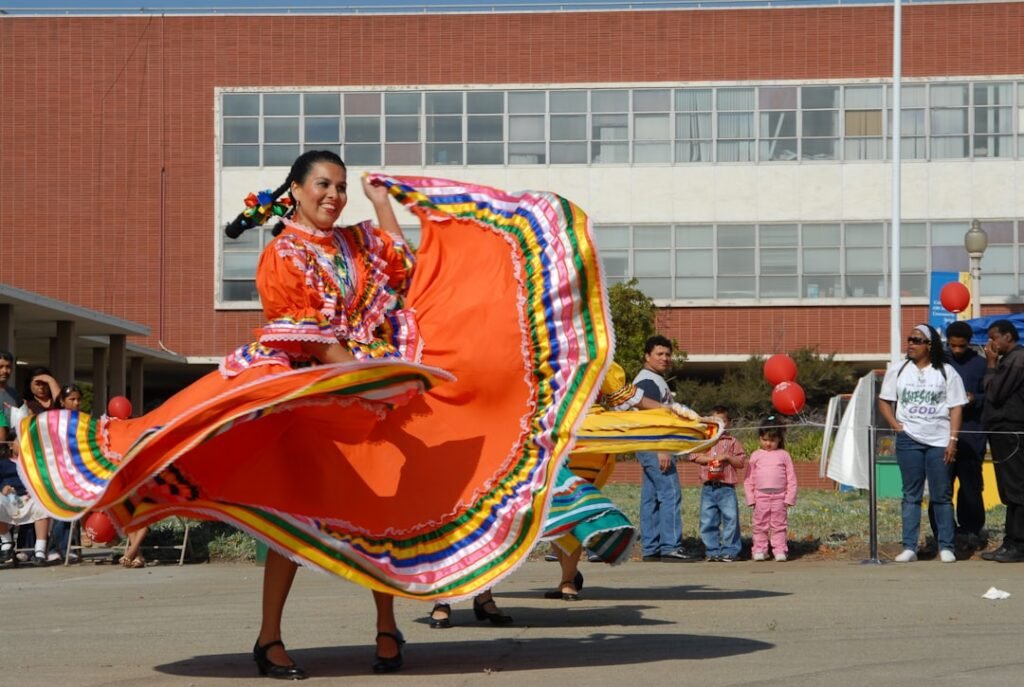Now Reading: Embracing Local Multiplayer Games in the Online Age
-
01
Embracing Local Multiplayer Games in the Online Age
Embracing Local Multiplayer Games in the Online Age

As I reflect on the evolution of gaming, it’s impossible to overlook the meteoric rise of online gaming. Over the past two decades, the landscape has transformed dramatically, with millions of players connecting across the globe in virtual worlds. The advent of high-speed internet and advanced gaming consoles has made it easier than ever for me to join friends and strangers alike in epic battles, cooperative missions, and expansive adventures.
I remember the excitement of logging into my favorite MMORPG, where I could team up with players from different continents, each bringing their unique skills and strategies to the table. This shift has not only changed how I play but also how I perceive gaming as a social activity. The allure of online gaming lies in its accessibility and variety.
With just a few clicks, I can dive into a vast array of genres, from first-person shooters to intricate role-playing games. The ability to communicate in real-time with others enhances the experience, allowing me to forge friendships that transcend geographical boundaries. However, while I revel in the thrill of online competition and collaboration, I can’t help but feel a twinge of nostalgia for the days when gaming was more localized and personal.
The rise of online gaming has undoubtedly opened new doors, but it has also led to a decline in the intimate experiences that local multiplayer games once provided.
Key Takeaways
- Online gaming has seen a significant rise in popularity in recent years, with more and more people turning to the internet to play with friends and strangers alike.
- Local multiplayer games have experienced a decline as online gaming has become more prevalent, with fewer people gathering in the same room to play together.
- Despite the decline, local multiplayer games remain important for fostering social connections and creating shared experiences among friends and family.
- The social aspect of local multiplayer games cannot be understated, as they provide an opportunity for face-to-face interaction and bonding over a shared activity.
- Local multiplayer games offer accessibility and inclusivity, allowing people of all ages and skill levels to join in the fun without the need for expensive equipment or high-speed internet.
The Decline of Local Multiplayer Games
As online gaming surged in popularity, local multiplayer games began to fade into the background. I’ve noticed that many of my favorite titles from years past have been overshadowed by their online counterparts. The convenience of playing with friends from the comfort of our own homes has led to a significant decline in couch co-op experiences.
I remember gathering with friends for marathon gaming sessions, sharing snacks and laughter as we battled through levels together. Those moments seem increasingly rare as more people opt for online play, often at the expense of face-to-face interaction. The decline of local multiplayer games can be attributed to several factors.
For one, the rapid advancement of technology has made online gaming more appealing and accessible. With platforms like Steam and consoles offering seamless online connectivity, it’s easy for me to jump into a game without needing to coordinate schedules or travel. Additionally, the rise of competitive gaming and esports has shifted the focus toward online play, where players can showcase their skills on a global stage.
While I appreciate the excitement of watching professional gamers compete, I can’t help but mourn the loss of those shared experiences that local multiplayer games once provided.
The Importance of Local Multiplayer Games

Despite the decline of local multiplayer games, I firmly believe they hold immense importance in the gaming landscape. These games foster a sense of camaraderie and connection that is often lost in the vastness of online play. When I sit down with friends or family to play a local multiplayer game, there’s an undeniable energy in the room—a shared enthusiasm that enhances the experience.
Whether we’re strategizing together or playfully competing against one another, these moments create lasting memories that I cherish. Local multiplayer games also serve as a bridge between generations. I’ve had the pleasure of introducing my younger siblings to classic titles that I grew up playing, and witnessing their excitement as they navigate these games is truly rewarding.
It’s a way for me to share my passion for gaming while also creating new traditions. In an age where technology often isolates us, local multiplayer games remind me of the importance of human connection and collaboration, reinforcing bonds that can sometimes feel strained in our fast-paced digital world.
The Social Aspect of Local Multiplayer Games
The social aspect of local multiplayer games is one of their most compelling features. When I gather with friends for a gaming night, it’s not just about the competition; it’s about the shared experience and the laughter that ensues. The banter that flows during gameplay—whether it’s playful trash talk or genuine encouragement—creates an atmosphere that is hard to replicate online.
I find that these interactions deepen my relationships with those around me, as we bond over our shared victories and defeats. Moreover, local multiplayer games often encourage teamwork and communication in ways that online games sometimes do not. When I’m physically present with my teammates, we can strategize in real-time, adjusting our tactics based on immediate feedback and body language.
This dynamic fosters a sense of unity that enhances our gameplay experience. In contrast, while online communication tools have improved significantly, they can sometimes lead to misunderstandings or miscommunications that detract from the overall experience. Local multiplayer games remind me that sometimes, being together in the same room is irreplaceable.
The Accessibility of Local Multiplayer Games
One of the most appealing aspects of local multiplayer games is their accessibility. Unlike online games that often require stable internet connections and powerful hardware, many local multiplayer titles can be enjoyed on a single console or device. This accessibility allows me to invite friends over without worrying about whether they have the latest gaming setup or a reliable internet connection.
It’s refreshing to know that we can simply plug in a few controllers and start playing without any technical hurdles. Additionally, local multiplayer games often cater to a wide range of skill levels and preferences. Whether I’m playing with seasoned gamers or newcomers, there’s usually something for everyone to enjoy.
Many titles feature simple mechanics that are easy to grasp but offer depth for those who want to master them. This inclusivity makes local multiplayer gaming an ideal choice for gatherings, as it encourages participation from all attendees, regardless of their gaming experience.
The Joy of Playing Together in the Same Room

There’s an undeniable joy that comes from playing together in the same room—a feeling that transcends mere entertainment. When I’m surrounded by friends or family, sharing laughter and excitement as we navigate challenges together, it creates an atmosphere filled with camaraderie and connection. The thrill of celebrating a hard-fought victory or commiserating over a frustrating defeat is amplified when experienced side by side.
These moments become cherished memories that linger long after the game is over. Moreover, playing together in person allows for spontaneous interactions that enhance the overall experience. I recall times when we would break out into impromptu dance parties during loading screens or engage in friendly debates about strategy mid-game.
These organic moments add layers to our gaming sessions that simply can’t be replicated through online play. The joy of being physically present with others while sharing a passion for gaming is something I hold dear, reminding me of why local multiplayer games are so special.
The Nostalgia of Local Multiplayer Games
Nostalgia plays a significant role in my appreciation for local multiplayer games. As I think back to my childhood, I can vividly recall countless evenings spent huddled around a console with friends, battling it out in classic titles like “Mario Kart” or “Super Smash Bros.” Those experiences shaped my love for gaming and created bonds that have lasted a lifetime. The nostalgia associated with these games evokes warm memories of laughter, friendly competition, and shared triumphs.
This sense of nostalgia is not just personal; it resonates with many gamers who grew up during similar eras. Local multiplayer games have become cultural touchstones, representing simpler times when gaming was often about gathering with friends rather than competing against strangers online. As I revisit these classic titles today, I’m reminded of the joy they brought me and how they laid the foundation for my passion for gaming.
This nostalgia fuels my desire to see local multiplayer games make a resurgence in an increasingly digital world.
The Unique Experience of Local Multiplayer Games
Local multiplayer games offer a unique experience that sets them apart from their online counterparts. When I play locally, there’s an immediacy and intimacy that enhances every moment. The ability to see my friends’ reactions in real-time—whether it’s joy, frustration, or surprise—adds an extra layer of engagement that is often missing when playing online.
This shared emotional journey creates a bond between players that deepens our connection and makes each victory feel even more rewarding. Additionally, local multiplayer games often encourage creativity and spontaneity in ways that online games may not. When I’m physically present with others, we can experiment with different strategies or create our own house rules on the fly.
This flexibility allows for a more personalized experience where we can tailor our gameplay to suit our group’s dynamics and preferences. It’s this unique blend of interaction and creativity that makes local multiplayer gaming so special and memorable.
The Revival of Local Multiplayer Games
In recent years, there has been a noticeable revival of local multiplayer games—a trend that fills me with hope for the future of gaming. Developers are recognizing the value of creating experiences that bring people together in person rather than isolating them behind screens. Titles like “Overcooked!” and “Cuphead” have gained popularity for their emphasis on cooperative gameplay and fun mechanics designed for group play.
This resurgence signals a growing appreciation for the social aspects of gaming that local multiplayer offers. I’ve also noticed an increase in events centered around local multiplayer gaming—such as game nights at cafes or community centers—where players can come together to enjoy these experiences collectively. These gatherings foster a sense of community and remind me that gaming is not just about competition; it’s about connection and shared enjoyment.
As more developers embrace this trend and create engaging local multiplayer experiences, I’m excited to see how it will shape the future landscape of gaming.
The Benefits of Balancing Online and Local Multiplayer Gaming
While both online and local multiplayer gaming have their merits, finding a balance between the two can enhance my overall gaming experience. Online gaming offers unparalleled access to diverse communities and competitive environments, while local multiplayer provides intimate interactions and shared memories with friends and family. By embracing both forms of play, I can enjoy the best of both worlds—engaging in epic online battles while also cherishing those moments spent together on the couch.
Balancing these two styles also allows me to cultivate different aspects of my gaming skills. Online play often hones my competitive edge and strategic thinking as I face off against skilled opponents from around the world. In contrast, local multiplayer encourages teamwork and communication skills as I collaborate with friends to achieve common goals.
By alternating between these experiences, I can develop a well-rounded approach to gaming that enriches my enjoyment and fosters personal growth.
The Future of Local Multiplayer Games
Looking ahead, I am optimistic about the future of local multiplayer games. As technology continues to evolve, there are exciting possibilities for enhancing these experiences further. Innovations such as virtual reality could revolutionize how we interact with each other during gameplay, creating immersive environments where we can truly feel like we’re sharing an adventure together—even if we’re physically apart.
Moreover, as developers recognize the importance of social interaction in gaming, I anticipate more titles will be designed specifically for local play. This resurgence could lead to a new wave of creativity in game design as developers explore innovative mechanics tailored for group experiences. Ultimately, I believe that local multiplayer games will continue to hold a special place in our hearts—a reminder that at its core, gaming is about connection, collaboration, and shared joy among friends and family.
The rise of local multiplayer games in the age of online everything is a fascinating trend that is reshaping the gaming landscape. As more and more players seek out opportunities to connect with friends and family in person, games that offer split-screen or couch co-op experiences are becoming increasingly popular. For those looking to master their skills in these local multiplayer games, a strategy guide like this one can provide valuable insights and tips. Additionally, for fans of action RPGs like Dragon’s Dogma 2, knowing the best classes to play can make all the difference in your gameplay experience. Check out this article for a ranking of the top classes in the game. And for those looking to improve their first-person shooter skills, essential aim training drills like the ones outlined in this guide can help take your gameplay to the next level.



























